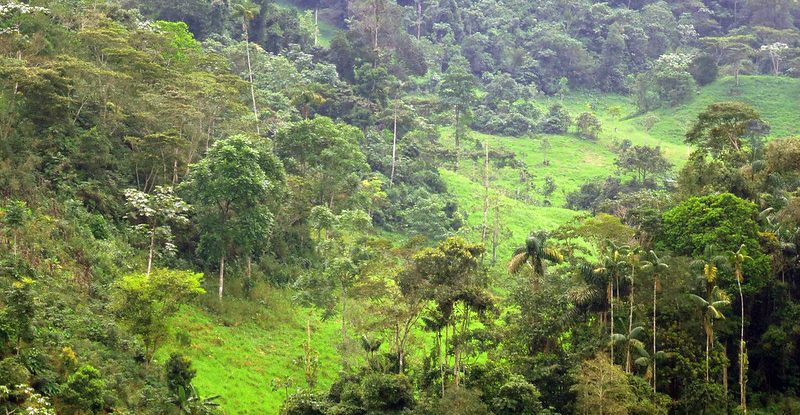
Assessing the value of secondary forests in Peru is vital for designing policies that recognize the benefits they contribute to sustainable ecosystem management efforts and restoring tree cover in a cost-effective manner, while including livelihood benefits and climate mitigation.
Defined as natural forest regrowth after clearance, secondary forests are estimated to make up 13.3 percent of forest cover in the Peruvian Amazon. They provide 63 percent of forest cover in Southeast Asia, and 34 percent across the lowland Neotropics.
In a paper recently published in the journal Land, researchers from the Center for International Forestry Research and World Agroforestry (CIFOR-ICRAF) and the Pontifical Catholic University of Peru (PUCP) recommend incorporating secondary forest into multi-level governance. In Peru, this approach could help channel the benefits of climate change mitigation incentives to local land managers through a landscape approach to forest management.
“While the essential value of intact forest ecosystems – mature, primary, old growth forests – to all life on earth is unequivocal, secondary forest plays increasingly critical roles in meeting the needs of the planet,” said Robin Sears, an associate scientist with CIFOR-ICRAF.
“Whether left alone or well-managed, young second-growth forest eventually matures and recovers a high percentage of the conservation value of old-growth forest.”
Like primary forests, secondary forests also provide timber, food, medicines and other non-timber forest products. They also help restore soil fertility in agricultural landscapes and regulate ecosystem services for water, habitat and climate.
Strengthening smallholder and local governance of local forests where farmers practice swidden-fallow mosaic farming, combined with incentives to maintain forest cover, can lead to an increase in long term secondary forest cover and more sustainable livelihoods.
“As long as smallholder swidden cultivation continues – but only in previously deforested areas – with its attendant cyclical creation of secondary forest through fallowing, and coupled with intensive agroforestry, Peru will enjoy a robust carbon-sink area,” Sears said.
Sears, with CIFOR-ICRAF researchers Manuel Guariguata and Peter Cronkleton, and Cristina Miranda Beas from PUCP, conducted a literature review on secondary forest governance.
They examined formal and informal forest governance structures and tools, ultimately recommending the application of a diverse multi-stakeholder approach to support a people-centered reform process.
Defining governance as “ways and institutions through which individuals and groups express their interests, exercise their rights and obligations and mediate their differences,” they evaluated property rights and land-use dynamics, stakeholders and their decision-making pathways, and laws, regulations and norms.
“Natural forest regrowth as the key process in developing secondary forests is increasingly being recognized as a cost-effective restoration strategy which, under the right mix of incentives and locally adapted rules and norms, has enormous potential for sustainable land management and biodiversity conservation,” Guariguata said.
Processes for achieving these goals include mapping land areas, formalizing property rights, and establishing agricultural incentives to encourage farmers to reduce the size of their footprint on forests.
New legislation in Peru, the Law of Rewards for Ecosystem Services Mechanisms (MERESE), may help link farmers to the forest carbon value chain by providing payments for ecosystem services in restored or recuperated forests, which could include secondary forests.
The researchers also recommend a participatory approach to developing new policy frameworks and programs related to land use and natural resource management adapted to local realities, including the needs and capacities of smallholders.
We want you to share Forests News content, which is licensed under Creative Commons Attribution-NonCommercial-ShareAlike 4.0 International (CC BY-NC-SA 4.0). This means you are free to redistribute our material for non-commercial purposes. All we ask is that you give Forests News appropriate credit and link to the original Forests News content, indicate if changes were made, and distribute your contributions under the same Creative Commons license. You must notify Forests News if you repost, reprint or reuse our materials by contacting forestsnews@cifor-icraf.org.